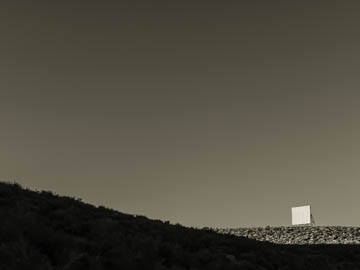Every Picture Is a Compromise
Lessons from the Also-rans
Most photography websites show the photographer's very best work. Wonderful. But that's not the full story of a creative life. If we want to learn, we'd better pay attention to the images that aren't "greatest hits" and see what lessons they have to offer. Every picture is a compromise — the sum of its parts, optical, technical, visual, emotional, and even cosmic – well, maybe not cosmic, but sometimes spiritual. Success on all fronts is rare. It's ok to learn from those that are not our best.
This is a series about my also-rans, some of which I've been able to improve at bit (i.e., "best effort"), none of which I would consider my best. With each there are lessons worth sharing, so I will.
Original digital captureEmpty Centers Week Resisting "bull's eye" composition. What I saw that I liked:Most of the time we photograph things. But what if the "thing" we want to photograph is space itself? What I learned:Alan Watts emphasized the relationwhip between things and space. He would say that without space there could be no things, and how would we know space unless there were things? In both of these images, I wanted to photograph space itself. In one sense, the empty center is a bull's eye composition of space, but without the miniscule things in the images, you wouldn't be aware of the space. I guess the real lesson here is that "empty centers" are never really empty. Space itself is an important part of our compositions, one we need pay attention to just as much as we pay attention to the things in our photographs. |


